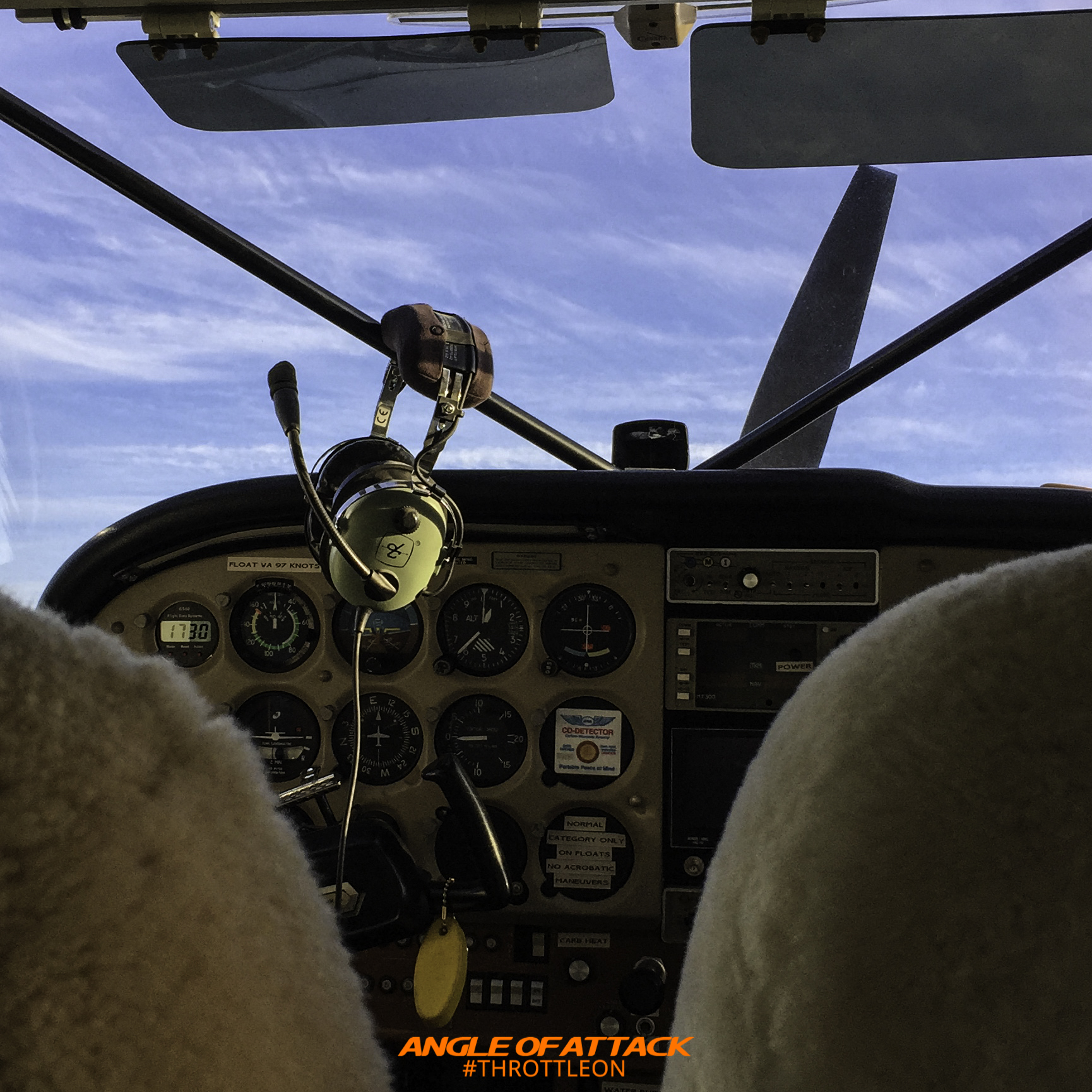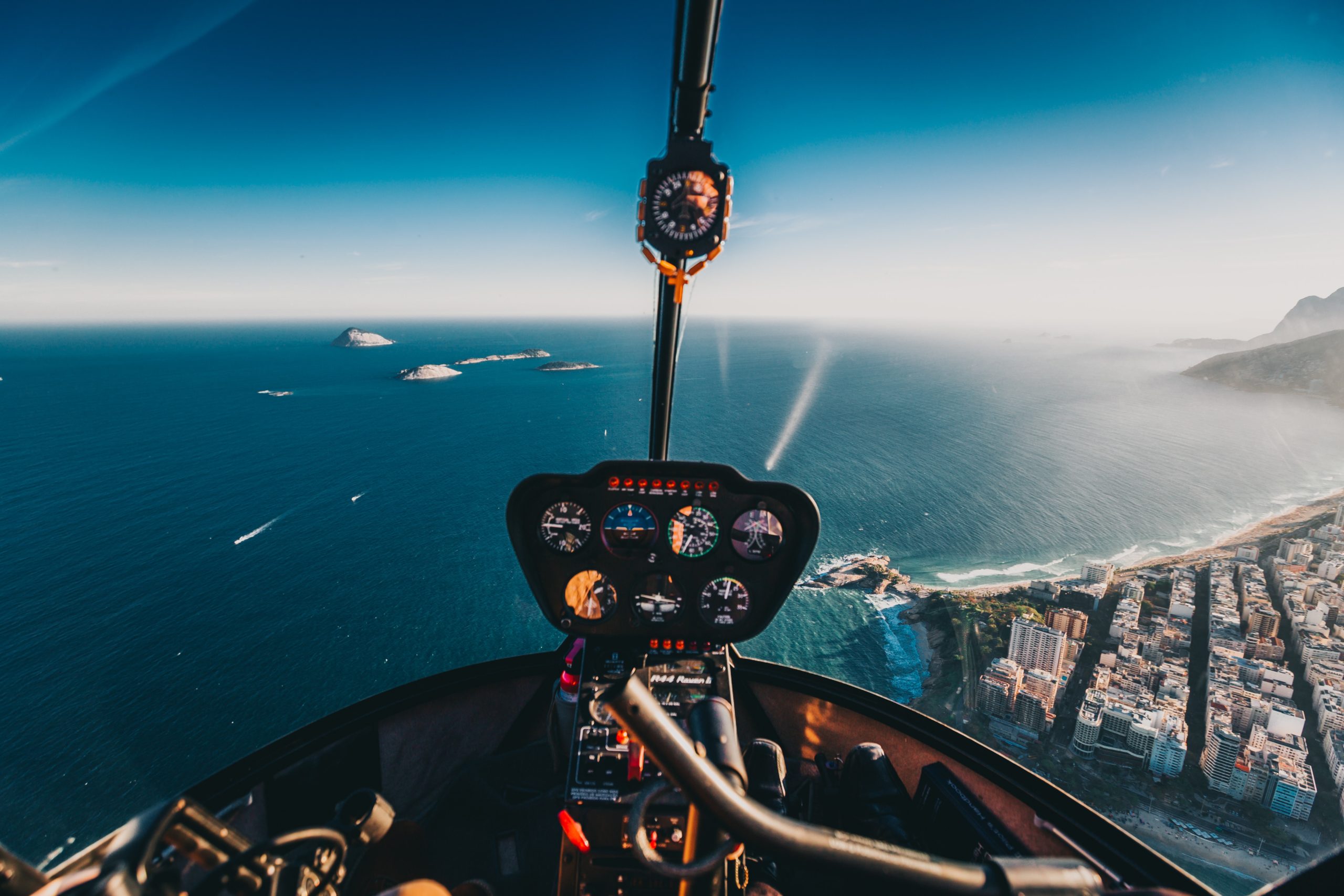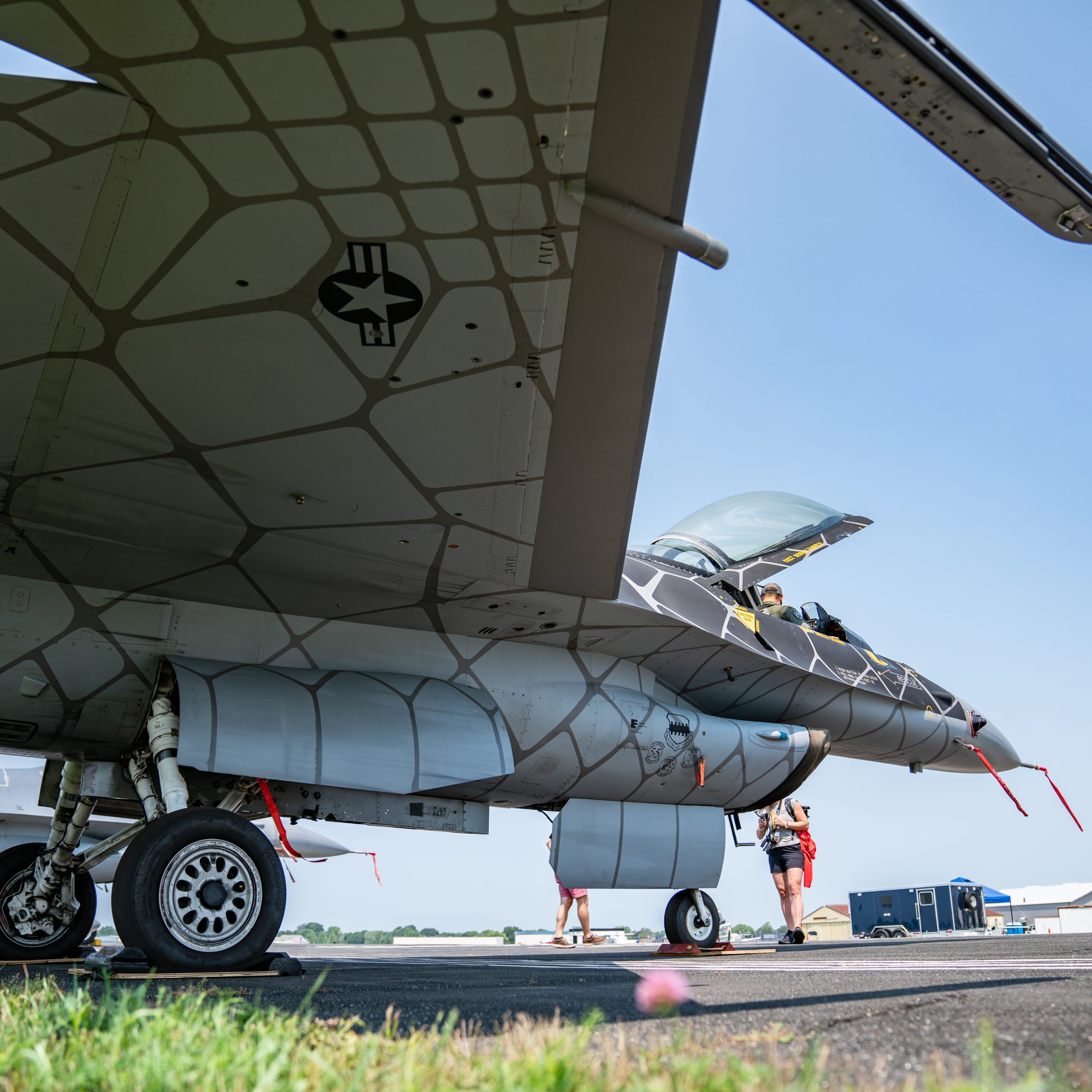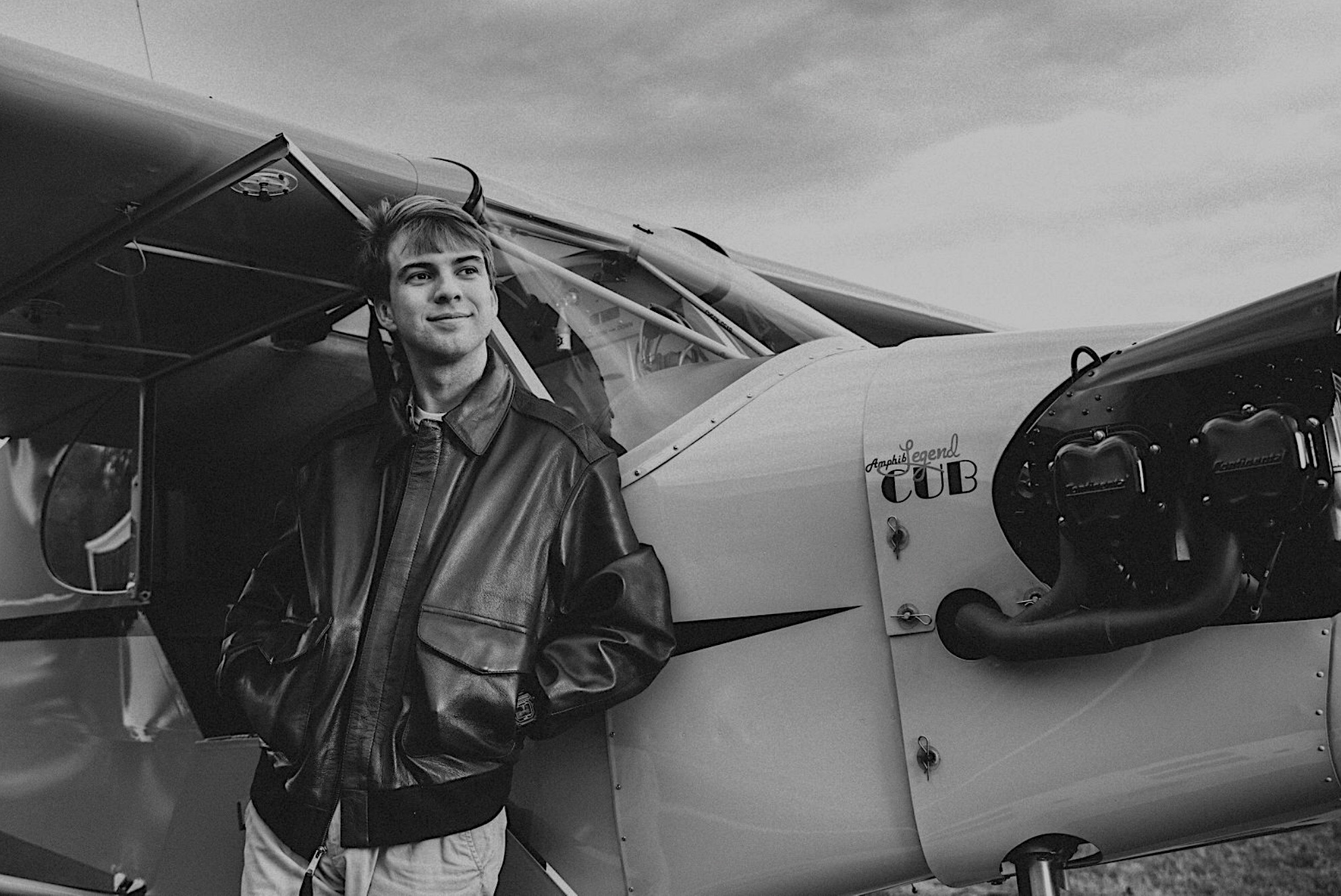
It’s the most asked question of any pilot out there: “how long did it take to become a pilot?” Everyone dreams of being a pilot, but the time and the cost are the two things that separate the dreamers from the flyers. Becoming a pilot is a commitment. So before you begin your journey skyward we are going to share how long it takes to become a private, commercial, helicopter, and even fighter pilot. We’ll also give you some tips from pilots who’ve been there.
How Long Does it Take to Become a Private Pilot?
To become a Private Pilot you’ll need at least 40 hours of flight training. 40 hours is the minimum, most pilots require 55-70 hours (this doesn’t include time spent studying for the written test). So how long, in days and months, does it actually take? That’s up to you.
If you are full in on becoming a pilot. (I.E. you quit your job, and train five-six times a week) you could crush your PPL in about four months. That’s the rare exception, not the norm. More likely it will take you between six and twelve months to get your private pilot’s license. That’s accounting for one-three lessons a week and time to study outside of flight school. If you’re looking to see the stuff you’ll encounter in your private pilot training check out Angle of Attack’s YouTube Playlist “Real Flight Lessons with Student Pilots.” It’ll give you just a taste of what to expect when you start.
Tips to Save Time Getting your Private
Make flight training a priority. This means blocking off an hour and a half three times a week for the next eight months to get your pilot’s license. Just like working out at the gym, becoming a pilot requires structured discipline over time to get the results you want. You must remember that even if you block off three times a week to fly, the weather might scrub a good number of those times.
Flight instruction is a perishable skill if not practiced. Don’t get frustrated if you feel like you’re plateauing. The worst thing you can do is take time off. If you take a month off from flight training, you have likely cost yourself two months’ worth of catching up. Stay on it. As Vice Air Marshal of the Royal Air Force, Johnnie Johnson once said: “Great pilots are made, not born.”
Finally, get your ground school done early. Angle of Attack’s Online Private Pilot Ground School is produced and taught by actual flight instructors, not actors, who have been in your shoes. Our online ground school is a reliable and trusted source of aeronautical knowledge, so much so that we back it with our over 100% money-back guarantee. If you don’t pass the written after using our course, we will refund your ground school and your test fee. That’s how confident we are that our ground course will get you skyward.
How long does it take to become a Commercial Pilot?
Most people when they ask this question are asking how long it takes to become an airline pilot. This is important because in aviation there is a “Commercial Pilot’s License,” but it doesn’t mean once you get it you can go hop in a 737 and fly. The certification you are looking for is the Airline Transport Pilot (ATP) designation. This is the certification that will allow you to go fly for the airlines. It normally takes someone 2-3 ½ years to get to the airlines.
Getting to the airlines means you will likely need to get your private, instrument, commercial, multi-engine, and ATP licenses/ratings. Additionally, most airlines require that you have 1,500 hours of flight time. (Note: due to the pilot shortage there has been repeated push to lower this number).
Tips for Getting to the Airlines Quicker
If flying for an airline is what you want, then commit 100%. One of the best ways to do this, if you want to get a college degree, is to go to a college that has a flight program. Embry Riddle Aeronautical University is the world-renowned non-military college if you want to be in aviation. However, plenty of other colleges have great flying programs that will get you headed toward the airlines.
Another major issue with going to the airlines is that even after getting all these ratings you will still have to get 1,500 hours total time to become accepted. Becoming a Certified Flight Instructor (CFI) will help you get these hours. Not only will being a flight instructor help you get hours but teaching others to fly will make you a better pilot for when you do get that call from the airlines one day.
How long does it take to become a Helicopter pilot?
There’s an old Army saying that helicopters don’t fly…they beat the air into submission.
Helicopter flying is intense and fun. It truly gives you a whole new perspective on flying. That being said, take almost everything you thought you knew about flying from airplanes and throw it out the window. In short, it can take four to six months to learn to fly helicopters.
To get your rotorcraft license you will need a minimum of 40 hours of helicopter flight time, and pass a written, oral, and checkride test. It’s like the Private Pilot all over again. Most people think getting a helicopter ticket is an add-on to a pilot’s license, but you don’t have to be a private pilot beforehand to get your helicopter license. That being said, those who have been through private pilot training know how the process works and usually finish up helicopter training quicker.
Tips for Helicopter Training
I feel like a broken record, but commitment is extremely important to helicopter training. There are fewer helicopter instructors/schools and they are more expensive to train in. It’s important to do as much research as possible and find a school that will work with your schedule.
Also, prepare for a big learning curve; especially if you are coming from flying fixed-wing aircraft. A helicopter does not fly at all like an airplane. Learning to fly a helicopter can be frustrating for those who have mastered the airplane only to find themselves struggling to hover. 
How long does it take to become a Fighter pilot?
Have you been inspired by the new Top Gun sequel? I don’t blame you. The original Top Gun was recruitment dynamite for the Navy in 1986 (enlistments soared 500%). But before you sign on that dotted line here are a few things you should know about becoming a fighter pilot.
First thing is first, you may want to be a fighter pilot, but does the military want you? Fighter pilot slots are highly competitive, and each branch only gives out a certain number. If accepted, the total time from Officer Training School to an F-35 sign-off can be between 3-4 years. It’s a big government investment in a person and that’s why the military often requires pilot’s sign up for 10+ year commitments.
Tips to become Top Gun
One of the best tips from military pilots is to do some civilian flight training beforehand. If you’re able, get your PPL. It’s no guarantee this will get you a pilot slot, but it’ll separate you from the pack. Another tip is to study like your career depends on it for the Air Force Officer Qualifying Test (AFOQT) Pilot section (Assuming you want to go Air Force). Finally, and this should come as no surprise, being in top physical condition will help tremendously. 
One thing to remember about all these timelines is they are estimates. How long it takes to become a pilot will depend on many variables, the most important of which is you. The shorter it takes to get a license, the less expensive it usually comes out. Yet, don’t beat yourself up if it’s taking you a little longer than “average.” Angle of Attack’s Online Ground School offerings can help get you started on the right track, check out our course options, and you’ll be soaring in no time.
Have more questions about becoming a pilot?
The FREE Total Student Pilot Course covers everything you need to know about starting your aviation journey!

Michael Brown grew up flying on the banks of the Tennessee River in Chattanooga, TN. He obtained his private pilot’s license in high school and has instrument and seaplane ratings. Michael graduated from Texas Christian University, where he founded the school’s flying club, with a double major in Business and Communications. He is currently a law student at Tulane University, studying transportation law. Michael was named the Richard Collins Young Writing Award winner and has had his legal writing recognized by the American Bar Association’s Air & Space Subcommittee. When he is not flying or studying, Michael enjoys riding his bike and cheering on his Atlanta Braves.

Stay Connected
Be the very first to get notified when we publish new flying videos, free lessons, and special offers on our courses.





